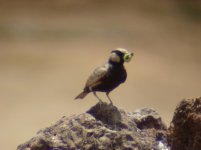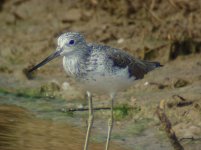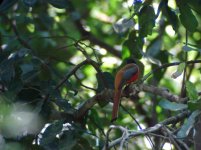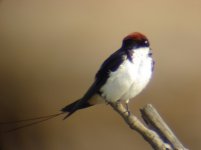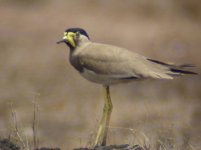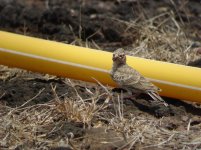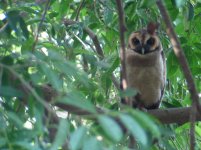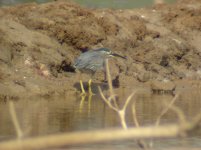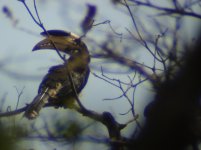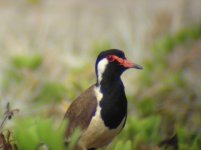Goa Trip Report
Goa, India
Jan 28th – Feb 12th, 2008
My wife Sandra and I decided to book a holiday to Goa after talking to several of our friends who have been there on a number of occasions.
We booked a package tour through Hays travel on behalf of Manos costing £1,114.
This included a one night’s stay with parking for two weeks at Britannia Airport Hotel near Manchester airport, flights with my travel to Dabolim, in flight meals included, coach transfer to the resort hotel The Riverside Regency in Baga Beach on a bed & breakfast basis.
Food and drink is very reasonable, 6 Bacardi’s and bottled Cokes, six large bottles of Kingfisher lager and two meals would normally come to about £14
Visas and inoculations
We applied to the High Commission of India for our visa’s in December total cost £74 = 2x postal orders and special delivery self addressed envelopes
Two injections from the practice nurse (Hepatitis A, Polio, Diphtheria, Typhoid, & Tetanus)
We were also advised to take antimalarial tablets, Paludrine/Avloclor at £30 for two boxes.
(Although a few people say these aren’t necessary we took them just in case)
Books used
Birds of Southern India: Richard Grimmett & Tim Inskipp and various trip reports from the net
Sites Visited Guides Used
Morjim Beach. Lloyd J. Fernandes.
Bondla. Rama M Govekar (Raymond)
Carambolim Mahesh Dhargalkar
Maem Lake Naresh
Batim Lake
Zauri River
Soilim
Fort Aguada
Saligoa
Apora Woods
Baga Hill and Fields
Birds Seen
Barred Buttonquail: 4 at Morjim Dunes.
Indian Peafowl: 11 seen on the road into Calangute, also heard on Baga hill.
Lesser Whistling-duck: Very common at Batim lake
Gadwall: Common at Batim Lake.
Spot-billed Duck: 3 at Batim lake
Northern Shoveler: Common at Batim lake.
Cotton Pygmy-goose: Common at Batim Lake.
Common Teal: Common at Batim lake.
Garganey: Common at Batim Lake
Northern Pintail: Common at Batim lake.
Black-rumped Flameback: 1 at Baga hill.
Greater Flameback: 1 at Bondla.
White-cheeked Barbet: 5 on Baga hill, 3 at Morjim
Coppersmith Barbet: Present at many sites.
Malabar Grey hornbill: 1 at Bondla.
Malabar Pied Hornbill: 2 at Maem lake.
Common Hoopoe: 1 in Baga fields.
Indian Roller: Common.
Common Kingfisher: Common.
Stork-billed Kingfisher: Common.
White-throated Kingfisher: Common.
Black-capped Kingfisher: 3 on the Zauri river
Collared Kingfisher: 7 on the zauri river.
Pied Kingfisher: Singles on the Zauri river, and Carambolim.
Green Bee-eater: Very Common.
Blue-tailed Bee-eater: Very Common.
Chestnut-headed Bee-eater: 4 at Bondla.
Asian Koel: Common.
Greater Coucal: 1 at Biera Mar hotel.
Alexandrine Parakeet: 2 at Biera Mar, 2 at Soilim, 4 over Baga hill.
Rose-ringed Parakeet: Common.
Plum-headed Parakeet: Common.
Indian Swiftlet: Common.
Asian Palm Swift: Common.
Alpine swift: Fairly common.
House Swift: Fairly common.
Crested Treeswift: 5 at Bondla, 1 at Biera Mar.
Barn Owl: Singles at hotel, and Biera Mar.
Jungle Owlet: 1 at soilim.
Spotted Owlet: 1 at hotel.
Brown Wood Owl: 1 at Saligoa
Brown Hawk Owl: 2 at Carambolim.
Grey Nightjar: 1 at Maem lake.
Spotted Dove: Common
Emerald Dove: 1 at Maem lake.
Orange-breasted Green Pigeon: 1 at Maem lake.
White-breasted Waterhen: Several at Biera Mar.
Purple swamphen: Very Common at Carambolim lake, 2 at Batim lake.
Common Moorhen: 2 at Biera Mar.
Common coot: 8 at Batim lake.
Pintail Snipe: Fairly common at Biera Mar.
Common Snipe: 5 in Baga fields.
Greater Painted Snipe: 2 at Biera Mar.
Eurasian Curlew: 4 on the Zauri river.
Common Redshank: Common.
Marsh Sandpiper: 8 at Marinha Dourada saltpans.
Common Greenshank: Fairly common.
Green Sandpiper: Fairly Common.
Wood Sandpiper: 3 at Biera Mar.
Terek Sandpiper: several on the Zauri river.
Common Sandpiper: Fairly common.
Little Stint: 1 at Marinha Dourada saltpans.
Bronze-winged Jacana: 2 at Maem lake, 3 at Baga fields.
Black-winged Stilt: 6 at Marinha Dourada saltpans.
Little Ringed Plover: Common.
Kentish Plover: Common.
Lesser Sand Plover: Common on Morjim beach, 2 at Marinha Dourada saltpans.
Greater Sandplover: Common on Morjim beach.
Yellow-wattled Lapwing: 5 at Soilim, 2 near Calangute
Red-wattled Lapwing: Fairly common.
Small Pratincole: 23 at Marinha Dourada saltpans.
Arctic Skua: 1 at Morjim beach.
Heuglin’s Gull: Common at Morjim beach.
Caspian Gull: Common on Morjim beach.
Pallas’s Gull: Common on Morjim beach.
Brown-headed Gull: Common on morjim beach.
Black-headed Gull: Common on Morjim beach.
Slender-billed Gull: Several on Morjim beach.
Common Gull: 1 on Morjim beach
Gull-billed Tern: Fairly Common
Lesser Crested Tern: Several on Zauri river and Morjim beach.
Greater Crested Tern: 20 on Zauri river.
Sandwich Tern: 2 on Morjim beach.
Osprey: 1 at Biera Mar.
Black-shouldered Kite: 8 noted at various sites.
Black Kite: Very Common.
Brahminy Kite: Very Common.
White-bellied Sea Eagle: Singles at Baga hill, Zauri river, and over Apora
Crested Serpent Eagle: 1 at Bondla
Marsh Harrier: 2 at Biera Mar
Shikra: Fairly common.
Besra: 1 at Maem lake.
Oriental Honey Buzzard: 2 over Baga Fields.
Indian Spotted Eagle: 2 at Soilim, 1 at Carambolim lake.
Greater Spotted Eagle: 1 at Soilim.
Steppe Eagle: 1 at Bondla.
Booted Eagle: 1 over Baga hill, several over Baga fields.
Changeable Hawk Eagle: 1 at Maem lake.
Common Kestrel: Present at several sites.
Peregrine Falcon: 1 over Baga fields.
Little Cormorant: 1 on Baga river on several occasions.
Indian Cormorant: Several on Zauri river.
Western Reef Heron: 1 at Morjim beach, 3 on Zauri river.
Great Egret: Common.
Intermediate Egret: Common.
Grey Heron: 2 on the Zauri River, 2 at biera Mar.
Purple Heron: 2 at Biera Mar
Indian Pond Heron: Very common.
Little Heron: Common on the Zauri river, 1 on Baga River
Black-crowned Night Heron: Common on the Zauri river.
Cinnamon Bittern: 1 at Biera Mar.
Black-headed Ibis: 46 on the Zauri river.
Eurasian Spoonbill: 21 on the Zauri river.
Asian Openbill: c60 at Soilim.
Woolly-necked Stork: 4 at Biera Mar.
Lesser Adjutant: 16 circling over the Zauri river.
Indian Pitta: 1 at Fort Aguada.
Blue-winged Leafbird: A few pairs on Baga hill.
Golden-fronted Leafbird: A male on Baga hill.
Brown Shrike: 1 at Biera Mar.
Bay-backed Shrike: 1 at Morjim dunes
Long-tailed Shrike: Common
Rufous Treepie: 2 at Maem lake
House Crow: Very common.
Large-billed Crow: 2 at Carambolim, 1 on Baga fields
Eurasian Golden Oriole: Common.
Black-hooded Oriole: 6 on Baga hill.
Ashy Woodswallow: 3 at Biera Mar, 2 at Marinha Dourada saltpans.
Large Cuckooshrike: 1 at Maem lake.
Small Minivet: Present on Baga hill.
Bar-winged Flycatcher-shrike: 2 at Bondla.
Black Drongo: Common.
Ashy Drongo: Common
White-bellied Drongo: 2 at Apora
Bronzed Drongo: 2 at Bondla.
Greater Racket-tailed Drongo: 1 at Bondla
White-throated Fantail: 1 at Carambolim.
White-browed Fantail: 1 at Bondla
Black-naped Monarch: 1 at Bondla
Asian Paradise Flycatcher: 2 at Bondla, 2 at Saligoa
Common Iora: Singles at Bondla, Apora, and Baga hill.
Blue-capped Rock Thrush 1 at Bondla.
Malabar Whistling Thrush: 3 at Bondla, 1 at Maem lake
Orange-headed Thrush: 2 at Bondla, 1 at Apora
Blackbird: Singles at Bondla, Maem lake and Baga hill.
White-bellied Blue Flycatcher: 1 at Bondla
Tickell’s Blue Flycatcher: 3 at Bondla.
Bluethroat: 3 on Baga fields
Oriental Magpie Robin: Fairly common
White-rumped Shama: 1 at Bondla.
Indian Robin: 5 on Baga hill.
Stonechat: 6 on Baga fields.
Pied Buschat: Singles on Baga Fields and Marinha Dourada saltpans
Chestnut-tailed Starling: 16 at Biera Mar.
Brahminy Starling: 7 at Morjim.
Rosy Starling: Common.
Common Myna: Common
Jungle Myna: Common.
Hill Myna: 5 at Biera Mar.
Velvet-fronted Nuthatch: 2 at Bondla.
Black-lored Tit: 8 on Baga hill.
Pale Martin: 3 at Bondla.
Barn Swallow: Common.
Wire-tailed Swallow: 11 at Bondla
Red-rumped Swallow: Common
Streak-throated Swallow: Fairly common at Carambolim
Grey-headed Bulbul: 2 on Baga hill.
Black-crested Bulbul: 3 at Bondla.
Red-whiskered Bulbul: Common.
Red-vented Bulbul: 2 at Maem lake.
White-browed Bulbul: 1 at Bondla.
Yellow-browed Bulbul: 2 at Bondla.
Zitting Cisticola: 3 on Baga fields.
Plain Prinia: 2 on Baga fields.
Blyth’s Reed Warbler: Common.
Clamorous Reed Warbler: 1 at Biera Mar
Common Tailorbird: Singles on Baga hill and Biera Mar.
Greenish Warbler: Common.
Western Crowned Warbler: 1 at Bondla.
Puff-throated Babbler: 1 at hotel, 5 at Apora.
Dark-fronted Babbler: 12 at bondla.
Jungle Babbler: 3 at Apora, and 8 at Maem lake.
Brown-cheeked Fulvetta: 2 on Baga hill.
Greater Short-toed Lark: 1 on Baga fields.
Malabar Lark: Common.
Oriental Skylark: 2 on Baga Fields.
Thick-billed Flowerpecker: 4 on Baga hill.
Plain Flowerpecker: Common.
Purple-rumped Sunbird: Common.
Crimson-backed Sunbird: 2 at Bondla.
Purple Sunbird: 3 at Bondla.
Loten’s Sunbird: 2 on Baga hill, 2 at Bondla.
White-browed Wagtail: Singles on Baga river and Baga fields.
Yellow Wagtail: 11 at Carambolim.
Grey Wagtail: 1 at Bondla.
Richards Pipit: Several on Baga fields and Carambolim.
Paddyfield Pipit: Common.
Blyth’s Pipit: 4 on Baga fields
Tree Pipit: 9 on Baga fields.
House Sparrow: Common.
Baya Weaver: Common on Baga fields.
White-rumped Munia: Common.
Scaly-breasted Munia: 2 on Baga fields.
Black-headed Munia: 9 at Bondla.
A total of 203 birds seen of which 139 were new species for me. Images can be viewed on my website:
http://www.tomtamsbirdimages.co.uk/india.htm
Tom Tams.




